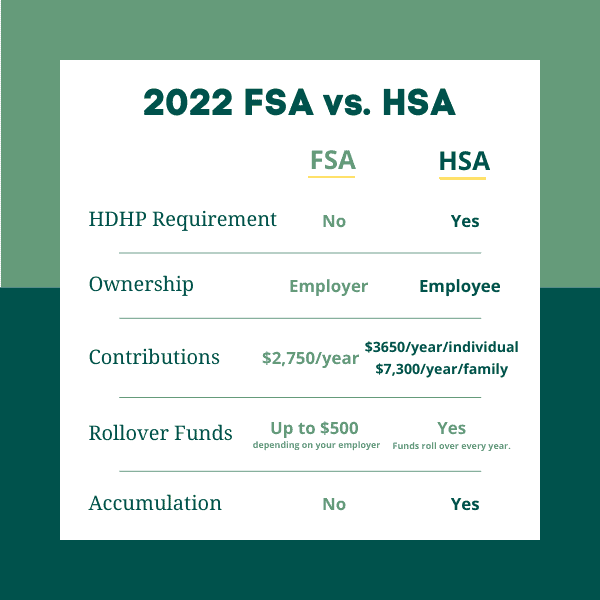Please provide your information and submit this form. Our team will be in touch with you shortly.
It’s that time of year again- open enrollment! Open enrollment is a period of time each year in which you are allowed to enroll in or make changes to your health insurance benefits. Texas open enrollment runs from November 1st to December 15th, and you can find a list of open enrollment dates specific to your state at https://www.ehealthinsurance.com and search for 2021 Open Enrollment Dates by State.
This is the only time of the year that you get to make these choices, and you can’t change your benefits outside of this open enrollment period unless you have a qualifying event such as the birth of a child, marriage, divorce, or death.
The options you have may be overwhelming, so if you’re looking to learn more about how different health insurance benefits can factor into your financial plan, this series is a great place to start.
What’s the Difference Between an HMO and a PPO?
First, we are going to go over the main differences between a Health Maintenance Organization (HMO) and a Preferred Provider Organization (PPO).
Networks
You’re probably familiar with the terms “in network” and “out of network.” One of the main differences between HMOs and PPOs is the flexibility of network providers. HMOs give you access to doctors within a specific network and you are covered if you stay within that network unless there is a medical emergency or you have prior approval. On the other hand, PPOs provide more flexibility because of fewer restrictions on out-of-network providers.
Primary Care Physicians
Another distinction between HMOs and PPOs is the requirement of a Primary Care Physician (PCP). HMOs require you to choose a PCP who will be the primary person to manage your medical needs. If you need to see a specialist, you will have to go to your PCP who will then refer you to someone else if they deem it necessary. If you don’t receive a referral from your PCP to see a specialist, the cost is typically not covered. PPOs are much more flexible because they do not require you to utilize a PCP and you are able to choose a specialist while still being covered.
Cost of Coverage
For both HMOs and PPOs, seeing providers inside your network is much more cost-effective. If you do go outside of your network, HMO coverage will be more expensive than going outside of your network with a PPO.
Considering PPOs provide more choice and flexibility, they typically have higher premiums and higher deductibles than HMOs. Depending on your current situation, it is important to weigh the costs and flexibility these plans offer to better help you decide which is best.
What’s the Difference Between an FSA and an HSA?
Next, let’s look at a couple of ways to save for qualified medical expenses. Two of the most common vehicles used for medical expense savings are Flexible Savings Accounts (FSAs) and Health Savings Accounts (HSAs). Both plans provide you with the ability to contribute pre-tax dollars into an account that can be used for qualified medical expenses such as dental care, vision care, and prescription expenses.
Qualifications
The first major distinction between FSAs and HSAs includes the eligibility requirements for getting the plan. FSAs must be set up by your employer. This means that self-employed and unemployed individuals are not eligible.
HSAs on the other hand are available to anyone regardless of employment status but have a few more requirements. With an HSA, you must be enrolled in a High Deductible Health Plan (HDHP). An HDHP is a health insurance plan that typically has much higher deductibles than a traditional health insurance plan, but typically has much lower premiums. In addition, to qualify for an HSA you cannot be eligible for Medicare or be claimed as a dependent on another person’s tax return.
Ownership
Because your employer is the one who offers you an FSA, your employer technically owns your FSA. If you were to change jobs, your FSA would not follow you unless you were eligible for FSA continuation through COBRA. Conversely, an HSA is set up by you, so the ownership of the account remains with you and follows you if you change employment.
Contributions
The contribution limit in 2022 for FSAs is $2,750 per year to your account. HSA contribution limits are higher, allowing $3,650 per year for an individual and $7,300 per year for family coverage. Those who are over the age of 55 are allowed an additional catch-up contribution of $1,000 to an HSA.
An important thing to keep in mind about these accounts is that HSAs provide more flexibility when it comes to changing your contribution for the year. With an HSA, you can change your annual contribution amount anytime, as long as it does not exceed the yearly limit. With FSAs, your contribution typically can only be changed during open enrollment or if you have a change in family status (marriage, divorce, birth of a child, etc.).

Rollover Rules
Perhaps the biggest differentiator between FSAs and HSAs is the ability of funds to roll over or not. With HSAs, the funds you put into the account will roll over every year, allowing you to save for long-term expenses. On the other hand, FSAs historically have been known by the phrase “use it or lose it.” If you don’t use the funds in the account for that year, the money does not roll over to the next year. Due to a recent change in FSA rules, your FSA plan may allow up to $500 of unused funds to roll over and/or allow a short grace period for you to use the funds in the plan before they expire for that year. Both provisions depend on your employer.
Tax Savings
For both FSAs and HSAs, you can contribute with pre-tax dollars and distributions for qualified medical expenses are tax-free! With HSAs, your contributions are tax-deductible which provides a great tax benefit. Another benefit of HSAs is that you can invest the funds in these accounts and achieve long-term growth because they are able to accumulate and grow tax-deferred.
Penalties
For FSAs, you may need to submit your medical expenses to your employer or an FSA management company hired by your employer in order to be reimbursed. If the expense is not considered a qualified medical expense, you may not be reimbursed.
HSAs allow tax-free distributions for qualified medical expenses. If the funds are used prior to age 65 for non-medical expenses, the funds will be subject to income tax and a 20% penalty. After age 65, you can use the funds for non-medical expenses without being subject to the 20% penalty, but you would be subject to tax.
We hope that this information is helpful to you during this open enrollment period! Feel free to reach out to us if you have any questions regarding FSAs or HSAs in your financial plan. Please note that this information does not address Dependent Care FSAs.
Sources:
https://www.valuepenguin.com/banking/difference-between-fsa-and-hsa
https://www.healthcare.gov/glossary/high-deductible-health-plan/
https://www.connectyourcare.com/tools/eligible-expenses/
https://www.humana.com/health-and-well-being/hmo-vs-ppo
The opinions voiced in this material are for general information only and are not intended to provide specific advice or recommendations for any individual.


